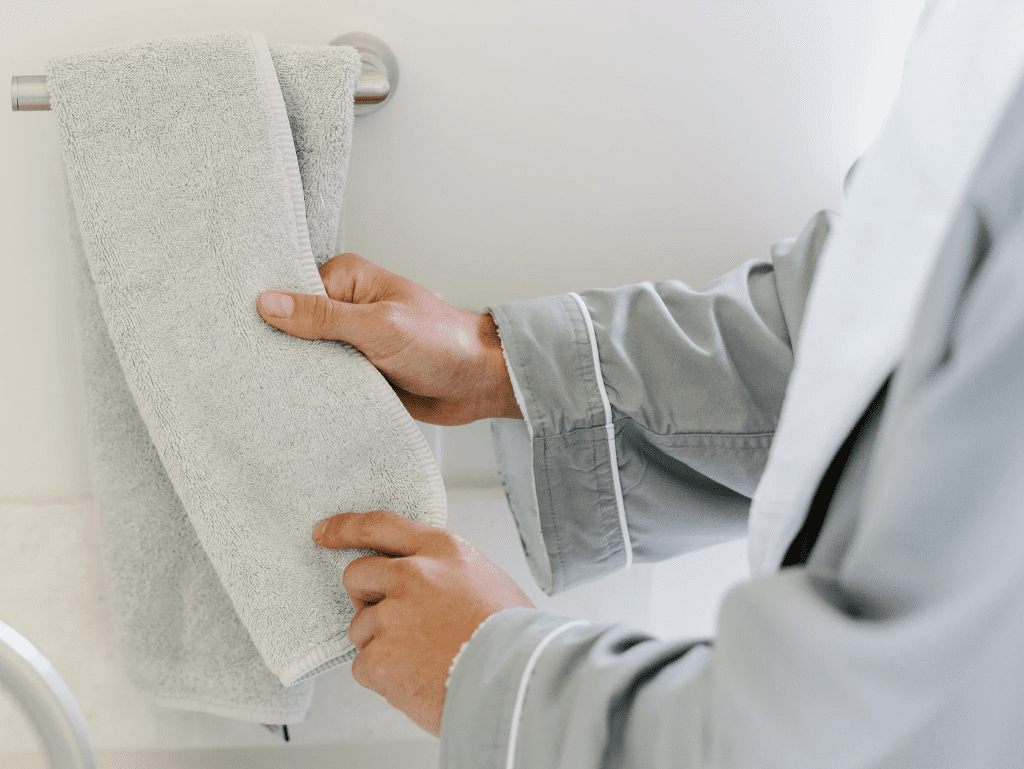Washcloths might not be the most glamorous part of your bathroom routine, but they play a vital role in your personal hygiene. So, when my mother-in-law tossed my washcloth because it smelled bad, I started questioning my own habits. I thought changing it every three months was sufficient, but her reaction made me wonder—how often should I actually be swapping out my washcloth?
Why It’s Important to Change Your Washcloth Regularly

Your washcloth does more than just clean your skin; it also absorbs oils, dirt, and dead skin cells with each use. Over time, it can become a breeding ground for bacteria and mold, especially if it remains damp for extended periods.
1. Preventing Bacteria and Mold Growth
Washcloths are moist after every use, which creates an ideal environment for bacteria, yeast, and even mold to grow. These microbes can irritate your skin and potentially cause infections, especially if you have sensitive skin or cuts. Regularly replacing or cleaning your washcloth helps reduce the risk of bacterial buildup.
2. Promoting Better Skin Health
Using a washcloth that’s past its prime can lead to clogged pores, acne, and irritation. A dirty washcloth transfers the accumulated dirt and bacteria back to your skin, which can be counterproductive to any skincare routine. By using a fresh washcloth, you’re allowing your skin to stay cleaner and healthier.
3. Controlling Odors
A washcloth that’s been sitting damp can develop an unpleasant odor due to bacteria buildup. Regularly replacing it helps keep things fresh, so you’re not dealing with musty smells every time you use it. Plus, a fresh-smelling washcloth can make your daily shower or face wash a more pleasant experience.
How Often Should You Change Your Washcloth?
Now that you understand the importance of a clean washcloth, let’s talk about how often you should change it. Here are a few guidelines that can help you determine the right frequency for keeping your washcloths in tip-top shape.
1. Every 3 to 4 Uses
For optimal hygiene, aim to replace or wash your washcloth after every three to four uses. This means if you use your washcloth once daily, it’s best to wash or switch it out about twice a week. By washing it frequently, you’re minimizing bacteria buildup and ensuring a fresh, clean cloth each time.
2. Weekly Routine
If replacing it every three to four uses feels excessive, a weekly routine can also work—especially if you let your washcloth dry completely between uses. Make sure you hang it in a well-ventilated area where it can dry quickly to prevent mold growth. Wash it thoroughly with hot water and soap at least once a week to maintain its freshness.
3. When It Smells or Looks Dirty
Sometimes, the simplest rule is to trust your senses. If your washcloth starts to smell funky or looks visibly dirty, it’s time for a replacement, even if it hasn’t hit the three to four-use mark or the weekly change. Remember that odor and discoloration are signs of bacteria buildup, which can harm your skin and reduce the effectiveness of your washcloth.
Tips for Maintaining Your Washcloth’s Hygiene
Keeping a clean washcloth isn’t just about changing it regularly. Proper maintenance between uses can extend its life and prevent bacterial growth. Here are a few tips to help you maintain washcloth hygiene:
1. Rinse Thoroughly After Each Use

After you’ve used your washcloth, give it a good rinse to remove any leftover soap, oils, and skin cells. This simple step helps prevent residue from accumulating on the cloth, which can contribute to odors and bacteria.
2. Air Dry in a Well-Ventilated Space
Avoid leaving your washcloth bunched up or in a closed, humid area. Instead, hang it in a well-ventilated spot where it can air dry quickly. A dry washcloth is less likely to develop bacteria and mold, making it safer for your skin.
3. Wash with Hot Water
When it’s time to launder your washcloth, use hot water (at least 140°F or 60°C) to kill bacteria and remove grime. Adding a bit of bleach or white vinegar to the wash cycle can help with extra disinfection, especially if you want to ensure your washcloth is germ-free.
4. Skip the Fabric Softener
While fabric softeners can make your washcloth feel softer, they also reduce its absorbency and leave behind a residue that can trap bacteria. Instead, use white vinegar as a natural fabric softener if needed, or simply avoid it to keep your washcloth as absorbent and clean as possible.
5. Have a Rotation System
Keeping several washcloths on hand allows you to rotate them regularly. This way, you always have a fresh one available while the used ones are being washed. It’s a simple but effective way to maintain cleanliness and avoid overusing any single washcloth.
What About Using a Washcloth with Others?

Sharing a washcloth, even with family members, is a hygiene no-no. Skin cells, bacteria, and oils are unique to each person, and sharing washcloths can lead to cross-contamination. If others in your household also use washcloths, make sure everyone has their own labeled cloth.
Other Alternatives for a Clean Routine
If you’re finding that washcloth maintenance is becoming too much of a hassle, consider switching to disposable face wipes, facial sponges, or other alternatives that you can use once and discard. These options can be more hygienic and convenient, especially if you have sensitive skin or are prone to breakouts. However, remember to choose eco-friendly, biodegradable options when possible to reduce waste.
Conclusion: Keep Your Washcloth Fresh for Healthier Skin
Ultimately, my mother-in-law had a point—changing your washcloth every three months is too infrequent. To keep your skin healthy and your washcloth fresh, aim to replace it every three to four uses or at least once a week. By following these simple guidelines, you’ll maintain better hygiene, avoid unpleasant odors, and give your skin the clean, fresh start it deserves every day.
So next time you’re tempted to hold onto that washcloth for “just one more use,” consider the impact on your skin and overall hygiene. A clean, regularly replaced washcloth is a small change that can make a big difference in your daily routine.


